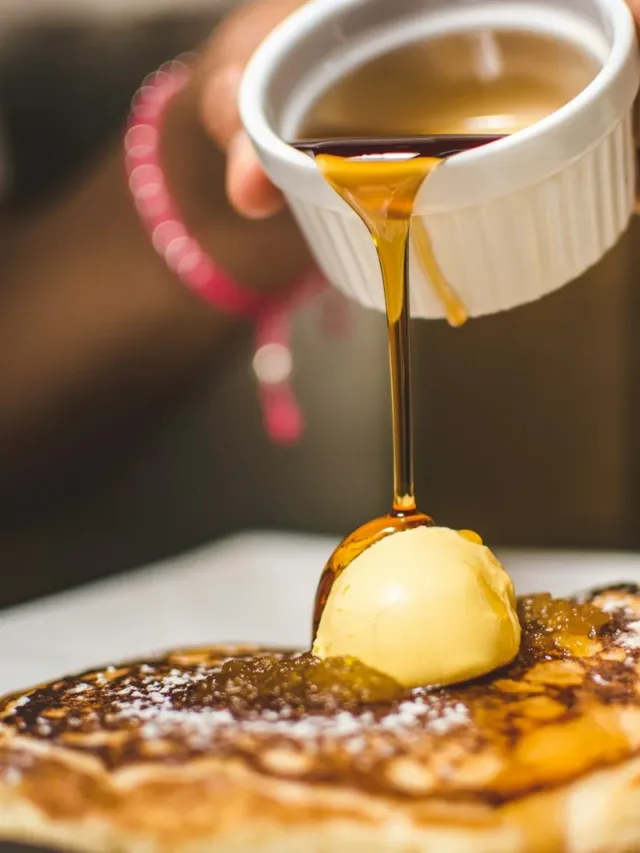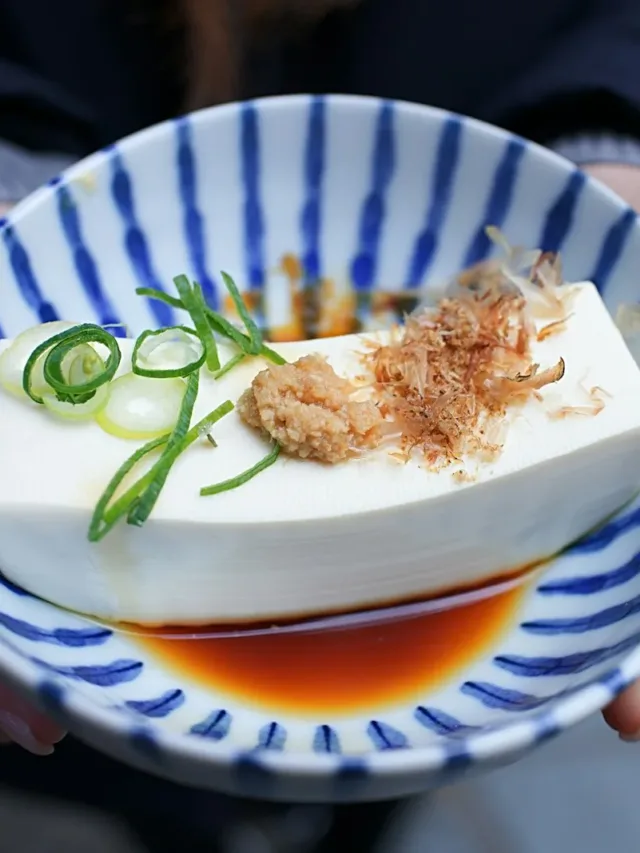All you need to know about coffee
Introduction
Coffee, often referred to as “the elixir of life,” is one of the world’s most popular beverages. It has a rich history, diverse origins, and a complex composition that contributes to its unique taste and effects. coffee’s taste and texture are influenced by a variety of factors, and its popularity stems from its caffeine content, cultural significance, diverse flavors, and versatility.

Coffee quality can vary widely, with factors such as bean quality, roast level, freshness, and brewing method playing crucial roles in determining the overall coffee experience. Understanding these aspects can help you explore the world of coffee and find the brew that suits your taste preferences best. In this comprehensive guide, we’ll explore the various aspects of coffee so that you are more informed about the most beloved beverage.
Composition of Coffee
Coffee is a complex beverage composed primarily of water, caffeine, organic acids like chlorogenic acids that impart acidity and flavor, natural sugars for sweetness, lipids providing aroma and mouthfeel, trace proteins contributing to body, and a rich array of aromatic compounds such as aldehydes, ketones, and esters, which give coffee its distinct and enticing scent and flavor. This intricate composition results in the diverse taste and sensory experience that coffee enthusiasts cherish. Here is a detailed breakdown of the Coffee components.
1. Caffeine:
Caffeine is the primary psychoactive compound in coffee, responsible for its stimulating effects on the central nervous system.
2. Water:
Water makes up a significant portion of brewed coffee, typically accounting for about 98% of its composition.
3. Organic Acids:
Coffee contains several organic acids, such as chlorogenic acids, which contribute to its acidity and flavor.
4. Sugars:
Natural sugars are present in coffee beans and contribute to its sweetness when roasted and brewed.
5. Lipids:
Coffee beans contain oils and lipids that add to the beverage’s mouthfeel and aroma.
6. Proteins:
While present in small amounts, proteins in coffee contribute to its body and texture.
7. Aromatics:
Coffee is renowned for its diverse range of aromatic compounds, including aldehydes, ketones, and esters, which give coffee its distinctive scent.
History of Coffee
The history of coffee dates back to the 9th century in Ethiopia, where a goat herder named Kaldi discovered the coffee berries. Coffee cultivation and consumption spread in the 15th century to the Arabian Peninsula, with the first documented use of coffee as a beverage occurring in Yemen in the 15th century. By the 17th century, coffee had gained immense popularity in Europe. From there, coffee’s journey continued, leading to the global coffee culture we know today, with coffeehouses, specialty coffee, and coffee plantations in various regions around the world.
– Ancient Beginnings:
- Coffee is believed to have originated in Ethiopia, where legend has it that a goat herder discovered the coffee bean’s stimulating properties. This discovery led to the cultivation of coffee plants.
– The Arabian Peninsula:
- By the 15th century, coffee had spread to the Arabian Peninsula. Coffee houses, known as “qahveh khaneh,” became centers of social interaction and intellectual discussion.
– Coffee in Europe:
- Coffee was introduced to Europe in the 17th century, and it quickly gained popularity. The first coffeehouse in England opened in 1652, and coffeehouses became known as “penny universities” for the intellectual discourse they fostered.
– Coffee and Colonization:
- Coffee cultivation spread to various colonial regions, including the Caribbean, Central and South America, and Southeast Asia. This expansion had significant economic and social implications.
Uses of Coffee
Coffee serves a myriad of purposes beyond being a morning wake-up call. It has become an integral part of social interactions and rituals, from casual meet-ups to formal business discussions, often fostering connections and stimulating conversation. Beyond its role as a social lubricant, coffee is a potent energy booster, enhancing alertness and focus, making it indispensable for many people during hectic days. It’s also a versatile culinary ingredient, elevating the flavors of various dishes and desserts. Furthermore, some studies suggest potential health benefits, including antioxidants that may promote well-being. Whether as a cherished morning routine, a source of inspiration in cafes, or an essential element in daily life, coffee’s versatility and appeal continue to make it a beloved beverage worldwide
Effects of Coffee
Coffee is renowned for its various effects, both positive and negative, which can vary from person to person due to factors like individual tolerance and consumption levels. There are many who are in love with coffee due to its unique qualities.
Here is a detailed overview of the effects of coffee:
Positive Effects:
- Increased Alertness and Concentration: The most well-known effect of coffee is its ability to increase alertness and improve concentration. This is primarily due to caffeine, a natural stimulant that blocks the action of adenosine, a neurotransmitter responsible for promoting sleep and relaxation.
- Enhanced Physical Performance: Caffeine can temporarily improve physical performance by increasing adrenaline levels, which can lead to improved endurance and strength during physical activities.
- Mood Elevation: Coffee consumption is often associated with improved mood and reduced feelings of fatigue, which can contribute to a more positive outlook and heightened mental well-being.
- Antioxidants: Coffee contains antioxidants like chlorogenic acid and quinines, which can help protect cells from oxidative damage and reduce the risk of certain diseases.
- Reduced Risk of Certain Diseases: Some studies suggest that moderate coffee consumption may be linked to a reduced risk of conditions such as Parkinson’s disease, Alzheimer’s disease, type 2 diabetes, and certain types of cancer.
- Social and Cultural Significance: Coffee plays a significant role in social interactions and cultural rituals worldwide, fostering connections and enhancing social experiences.
Negative Effects:
- Sleep Disturbances: Consuming coffee, especially in large quantities or in the afternoon/evening, can disrupt sleep patterns, leading to difficulties falling asleep and staying asleep. This is due to caffeine’s stimulating effects, which can persist for several hours.
- Anxiety and Jitteriness: Excessive caffeine intake can lead to feelings of restlessness, anxiety, and jitteriness, especially in individuals sensitive to caffeine. These effects may include increased heart rate and palpitations.
- Dependence and Withdrawal: Regular consumption of caffeine can lead to physical dependence. When individuals try to reduce or quit caffeine, they may experience withdrawal symptoms such as headaches, irritability, and fatigue.
- Digestive Issues: Coffee is acidic and can irritate the gastrointestinal tract in some people, leading to stomach discomfort, acid reflux, or gastritis.
- High Blood Pressure: In some individuals, caffeine can temporarily raise blood pressure, which may be a concern for those with hypertension.
- Bone Health: Excessive coffee consumption has been associated with a potential decrease in calcium absorption, which could impact bone health over time.
- Pregnancy Risks: High caffeine intake during pregnancy may be linked to an increased risk of miscarriage and preterm birth, making it advisable for pregnant women to limit their coffee consumption.
Types of Coffee
Coffee comes in a diverse range of types, each characterized by factors such as bean variety, origin, roast level, and brewing method. Here is a detailed report on some of the most common coffee types:
1. Arabica Coffee
Bean Variety: Arabica (Coffea arabica)
Origin: Arabica coffee is believed to have originated in the highlands of Ethiopia. It is now grown in several coffee-producing countries, including Brazil, Colombia, Ethiopia, and many Central and South American regions.
Characteristics: Arabica beans are known for their delicate and nuanced flavors. They often have a wide range of taste notes, including fruity, floral, and nutty, with bright acidity and a smoother, less bitter profile compared to Robusta beans. Arabica coffee is commonly used in specialty coffee.
2. Robusta Coffee
Bean Variety: Robusta (Coffea canephora)
Origin: Robusta coffee is native to sub-Saharan Africa and is widely cultivated in countries such as Vietnam, Brazil, and Indonesia.
Characteristics: Robusta beans have a strong and bitter flavor profile with a higher caffeine content compared to Arabica beans. They are known for their bold, earthy taste and often contribute to espresso blends for their crema and body. Robusta is less favored for its taste compared to Arabica but is valued for its caffeine content and resistance to pests and diseases.
3. Single-Origin Coffee
Definition: Single-origin coffee is sourced from a specific region, farm, or even a single estate, highlighting the unique flavors of that particular location.
Characteristics: Single-origin coffees allow consumers to explore the distinct flavor profiles associated with different coffee-growing regions. For example, Ethiopian coffee may have floral and fruity notes, while Colombian coffee is often well-balanced and bright.
4. Espresso
Brewing Method: Espresso is a concentrated coffee brewed by forcing hot water through finely-ground coffee beans using an espresso machine. It forms the base for many coffee beverages like cappuccinos and lattes.
Characteristics: Espresso is known for its intense and robust flavor, often with a layer of crema on top. It has a rich, full-bodied taste and can be served as a single shot or used as the foundation for various espresso-based drinks.
5. Cold Brew
Brewing Method: Cold brew is made by steeping coarsely ground coffee beans in cold water for an extended period, typically 12-24 hours. The result is a concentrated coffee that is diluted with water or milk when served.
Characteristics: Cold brew coffee is smooth, less acidic, and has a milder flavor compared to hot-brewed coffee. It’s typically served over ice and can be sweetened or flavored as desired.
6. French Press
Brewing Method: French press coffee is made by steeping coffee grounds in hot water and then pressing the grounds with a plunger to separate them from the liquid.
Characteristics: French press coffee tends to have a rich and full-bodied texture with more sediment and oils compared to filtered brews. It is appreciated for its robust flavor and simplicity of preparation.
7. Specialty Coffee
Definition: Specialty coffee refers to high-quality coffee beans, often sourced from specific regions or farms, and meticulously roasted and brewed to showcase their unique flavors.
Characteristics: Specialty coffee emphasizes the bean’s origin, quality, and distinct flavor profiles. It is typically prepared with precision to highlight the beans’ best attributes and is often considered the “wine” of the coffee world, with connoisseurs seeking out unique and exceptional varieties.
Coffee Taste and Texture
Coffee’s taste and texture are influenced by various factors, including the coffee bean variety, roast level, brewing method, and preparation. Here’s a breakdown of the key elements:
Taste:
- Acidity: Coffee can have varying levels of acidity, ranging from bright and citrusy to mellow and soft. This acidity contributes to the coffee’s overall flavor profile.
- Flavor Notes: Coffee aficionados often describe the flavor in terms of specific notes, such as fruity, nutty, chocolatey, floral, or spicy. These notes can vary widely depending on the coffee’s origin and roast.
- Bitterness: Coffee can have a pleasant bitterness that balances its acidity and sweetness. However, excessive bitterness can result from over-roasting or over-extraction during brewing.
- Sweetness: High-quality coffee often has a natural sweetness, which can be enhanced by factors like the bean’s origin and the roast level.
Texture:
- Body: Coffee can have a light, medium, or full body. This refers to the coffee’s thickness or mouthfeel. Coffees with a full body feel rich and substantial, while lighter-bodied coffees feel more delicate.
- Smoothness: A well-prepared cup of coffee should have a smooth, non-gritty texture. Proper brewing and filtering methods help achieve this.
- Aroma: The aroma of coffee is an integral part of the tasting experience. It complements the flavor and can be described as fragrant, floral, earthy, or spicy.
Reasons for Popularity
Coffee’s enduring popularity can be attributed to several factors:
- Caffeine Content: Coffee’s stimulating effects are a major draw for many people, helping them stay alert and focused.
- Social and Cultural Significance: Coffee has historically been a gathering point for social interactions, from coffeehouses in Europe to coffee breaks at work.
- Diverse Flavors: Coffee offers a wide range of flavors, from the boldness of a dark roast to the subtleties of a single-origin specialty coffee.
- Versatility: Coffee is incredibly versatile, serving as a morning ritual, dessert accompaniment, and culinary ingredient.
- Health Benefits: Some studies suggest potential health benefits, including antioxidants and protection against certain diseases.
- Culinary Creativity: Coffee inspires creativity in the culinary world, leading to innovations like coffee-infused cocktails and gourmet coffee desserts.
Different Types of Coffee Quality
Coffee quality varies significantly based on several factors:
- Bean Quality: The type of coffee bean (Arabica or Robusta) and its origin greatly affect quality. Arabica beans are generally considered superior due to their nuanced flavors and lower bitterness.
- Roast Level: Coffee can be roasted to various degrees, from light to dark. High-quality coffee often emphasizes the bean’s unique characteristics rather than masking them with excessive roasting.
- Freshness: Coffee is best enjoyed when freshly roasted and ground. Stale coffee can taste flat and lose its aromatic qualities.
- Brewing Method: The method of preparation plays a crucial role. Proper brewing techniques, such as the right water temperature and brewing time, are essential for extracting the best flavors.
- Storage: Proper storage in airtight containers away from light, heat, and moisture is crucial for preserving coffee freshness.
- Grind Size: The grind size of coffee beans should match the brewing method. Consistency in grind size is essential for even extraction and balanced flavors.
- Certifications: Some coffees are certified organic, fair trade, or specialty-grade, indicating higher quality and ethical sourcing practices.
Coffee production and consumption are widespread around the world, with various countries playing significant roles in both aspects. Here is a list of some of the major coffee-producing and consuming countries:
Top Coffee-Producing Countries:
- Brazil: Brazil consistently ranks as the world’s largest coffee producer, known for both Arabica and Robusta varieties.
- Vietnam: Vietnam is a major producer of Robusta coffee and has seen significant growth in recent years.
- Colombia: Colombia is renowned for its high-quality Arabica coffee and is one of the largest producers in South America.
- Ethiopia: Ethiopia is considered the birthplace of coffee and is known for its diverse coffee varieties and unique flavors.
- Honduras: Honduras is a significant producer of both Arabica and Robusta coffee, exporting a substantial quantity worldwide.
- Peru: Peru is known for its organic and specialty coffee production, with a focus on sustainable practices.
- Mexico: Mexican coffee is known for its mild flavor and is often used in blends.
- Guatemala: Guatemala produces high-quality Arabica beans and is famous for its Antigua coffee region.
- Costa Rica: Costa Rica is celebrated for its specialty coffee, often featuring bright acidity and complex flavors.
- Uganda: Uganda is a prominent African coffee producer, known for its Robusta beans.
Also check out Where to find the best coffee in the world? and you may also want to read Where to find the best Coffee in India?
Top Coffee-Consuming Countries:
- Finland: Finns are some of the world’s most avid coffee consumers, with a tradition of coffee breaks and high per capita consumption.
- Norway: Coffee culture is strong in Norway, and Norwegians are among the top coffee consumers per capita.
- Iceland: Icelanders have a strong coffee culture, often enjoying coffee with friends and family.
- Denmark: Denmark has a vibrant coffee scene, with a focus on quality and specialty coffee.
- Netherlands: The Netherlands has a long history of coffee consumption, and it’s a popular beverage across the country.
- Sweden: Swedes have a deep coffee culture, with a tradition of fika (coffee breaks) and a high per capita consumption rate.
- Switzerland: Coffee is a popular beverage in Switzerland, enjoyed in various forms.
- Canada: Coffee is a staple in Canada, with coffee chains and independent cafes being widespread.
- Belgium: Belgium has a strong coffee culture, with a preference for quality and tradition.
- United States: The U.S. is a significant coffee consumer, with a diverse coffee culture that includes specialty coffee, espresso, and various brewing methods.
Check out our story Which countries love Coffee the most?
Coffee Based Dishes
Coffee is a versatile ingredient that can be used in a variety of culinary creations, ranging from sweet to savory. Here are some popular coffee-based dishes from around the world:
Sweet Coffee-Based Dishes:
- Coffee Cake: A classic dessert often paired with a cup of coffee, coffee cake features a moist and crumbly texture with a cinnamon or nut topping.
- Tiramisu: An Italian dessert made with layers of coffee-soaked ladyfingers, mascarpone cheese, and cocoa powder. It’s a delightful combination of creamy and coffee flavors.
- Coffee Ice Cream: Creamy coffee-flavored ice cream is a favorite dessert for coffee lovers. It can be enjoyed plain or as part of a sundae.
- Affogato: A simple Italian dessert where a scoop of vanilla ice cream or gelato is “drowned” in a shot of hot espresso. The contrast between hot and cold creates a delightful sensory experience.
- Coffee Panna Cotta: This Italian dessert features a silky coffee-flavored custard, often garnished with caramel or chocolate sauce.
- Mocha Brownies: Combining the flavors of coffee and chocolate, mocha brownies are a rich and indulgent treat.
- Coffee Flan: A twist on the traditional caramel flan, coffee flan incorporates coffee into the creamy custard, adding depth to the flavor.
Savory Coffee-Based Dishes:
- Coffee-Rubbed Steak: Coffee grounds, along with spices and herbs, are used to create a flavorful rub for steaks. The coffee adds a smoky and earthy note to the meat.
- Coffee-Glazed Pork: Coffee can be used to make a glaze for pork, providing a unique blend of sweetness and bitterness.
- Coffee-Marinated Chicken: Chicken marinated in a coffee-based marinade can take on a rich, smoky flavor, especially when grilled.
- Coffee BBQ Sauce: Coffee can be a key ingredient in barbecue sauce, contributing depth and complexity to the flavor profile.
- Coffee-Infused Chili: Adding brewed coffee to chili recipes can enhance the depth of flavor, creating a robust and slightly bitter undertone.
- Coffee-Rubbed Ribs: Coffee-based rubs can be used on ribs before grilling or smoking, imparting a smoky and slightly spicy flavor.
Coffee-Based Beverages:
- Cappuccino: An espresso-based drink with equal parts of espresso, steamed milk, and milk foam, often topped with a dusting of cocoa or cinnamon.
- Latte: Similar to a cappuccino but with more steamed milk and less foam, a latte is known for its smooth and creamy texture.
- Coffee Cocktails: Coffee can be used to create various alcoholic cocktails, such as Espresso Martinis and Irish Coffee, which typically contain coffee, spirits, and sweeteners.
- Turkish Coffee: A traditional method of brewing coffee, Turkish coffee is strong and often flavored with cardamom. It’s known for its sludgy grounds at the bottom of the cup.
- Vietnamese Iced Coffee: A sweet and strong coffee made with hot water dripping through a metal mesh into a glass containing sweetened condensed milk, which is then poured over ice.
These coffee-based dishes and beverages showcase the versatility of coffee as an ingredient, adding depth and flavor to both sweet and savory culinary creations. Whether enjoyed in a dessert, as part of a main course, or in a beverage, coffee can enhance the overall dining experience.
Conclusion
In conclusion, coffee is a globally cherished beverage with a fascinating history, diverse uses, and a complex composition that contributes to its allure. Whether you enjoy a simple cup of black coffee or indulge in a meticulously crafted espresso drink, coffee has a place in cultures worldwide, bringing people together and stimulating the senses.







